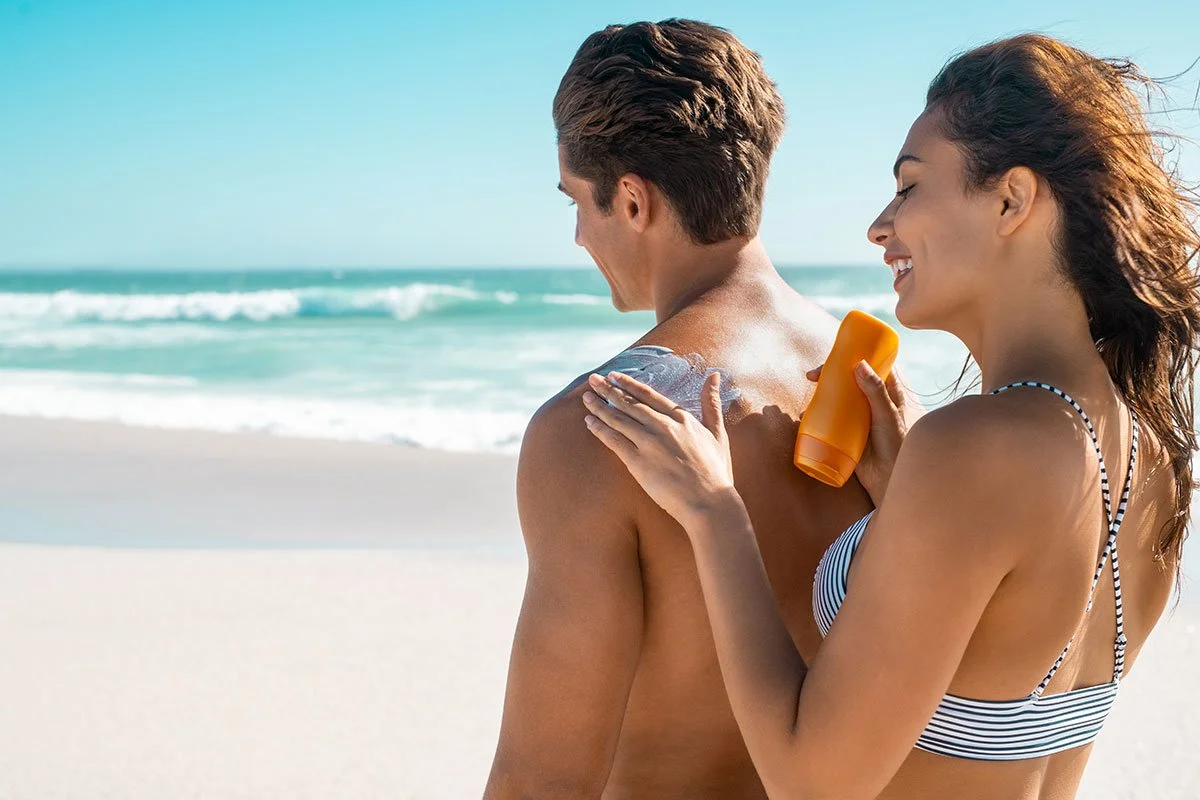EVERYTHING YOU NEED TO KNOW ABOUT SUNSCREEN: TYPES, BENEFITS, AND SUN DAMAGE PREVENTION
The heat has arrived, and with it, the need to protect your skin. Before restocking your sunscreen, it's essential to understand the difference between physical and chemical sunscreens. Here’s everything you need to know to choose the right one for you.
Sunscreen is an essential ally for the health of our skin. Although many people associate it exclusively with summer, it should be used daily and consistently throughout the year. This is because ultraviolet (UV) rays responsible for various forms of skin damage can penetrate clouds even on grey days. But what types of sunscreens exist, how do they work, and why is it crucial to incorporate them into our daily routines? Here’s a complete guide to understanding how they function, the real risks of sun exposure, and how to protect ourselves effectively.
SUNSCREENS: PHYSICAL, CHEMICAL, AND HYBRID
The first step toward effective protection is choosing the type of sunscreen that best suits your skin. There are three main categories: chemical sunscreens, physical (also known as mineral) sunscreens, and hybrid sunscreens that combine the advantages of both.
Chemical sunscreens work by penetrating the upper layers of the skin, where they absorb UV radiation and convert it into heat. They are ideal for people with oily or combination skin since they absorb quickly without leaving residue. Thanks to their lightweight texture and invisible finish, they are often preferred for daily use, especially under makeup or in warm climates.
Physical sunscreens, on the other hand, act as a barrier that sits on the surface of the skin, reflecting and scattering UV rays before they can penetrate. Traditionally, they left a white cast, although modern formulas have managed to eliminate this effect. They are especially recommended for sensitive skin, as they do not alter the skin’s natural chemistry or typically cause allergic reactions.
Finally, hybrid sunscreens combine the best of both worlds: the high protection of physical filters with the cosmetic texture of chemical ones. They are an excellent option for those seeking both efficacy and comfort.
THE SUN: BETWEEN BENEFIT AND RISK
Sun exposure has undeniable benefits: it improves mood, stimulates vitamin D synthesis, and can have therapeutic effects on skin conditions such as psoriasis. However, these positive effects are only achieved with brief exposure (about 15 minutes per day). Beyond that threshold, solar radiation can have serious short- and long-term consequences.
SHORT-TERM EFFECTS OF INTENSE SUN EXPOSURE INCLUDE:
SUNBURNS: First-degree skin injuries caused by UVB rays that damage cellular DNA and trigger inflammation. Symptoms include redness, blisters, swelling, and pain. Just five blistering sunburns before the age of 20 can increase the risk of melanoma by 80%.
SUN ALLERGIES: Some people develop inflammatory reactions like polymorphic light eruption, a condition that causes red, itchy spots. This is typically related to long UVA rays.
PIGMENTATION DISORDERS: Solar radiation can trigger uncontrolled melanin production, leading to dark spots (like melasma) or depigmentation (such as vitiligo).
ACNE AND “REBOUND EFFECT”: Although sun exposure may initially dry out the skin, it quickly compensates by producing more oil, worsening acne over time. It also thickens the skin, increasing pore blockage.
PHOTOSENSITIVITY: Certain medications such as antibiotics, anti-inflammatories, and acne treatments can make the skin extremely sensitive to sunlight, leading to severe burns even after minimal exposure.
PHOTOIMMUNOSUPPRESSION: UV radiation can temporarily suppress the skin’s immune defenses. While this can be beneficial for some autoimmune conditions, it may also reactivate infections like cold sores.
PREMATURE AGING AND SKIN CANCER: LONG-TERM RISKS
Sun damage goes far beyond redness or dark spots it also leaves deep marks over time. Chronic exposure to UV rays, especially UVA, deteriorates collagen and elastin fibers, which are responsible for the skin’s firmness and elasticity. This phenomenon, known as photoaging, manifests as deep wrinkles, volume loss, sagging, dark spots, and a dull or yellowish complexion.
The best way to prevent these signs of aging is through the daily use of a broad-spectrum facial sunscreen (UVA and UVB), even on cloudy days. Complementing this protection with active ingredients such as retinol can help repair existing damage by stimulating cell renewal and restoring the skin’s structural components. Retinol combined with sunscreen has become a gold standard in anti-aging dermatology.
However, the greatest long-term risk of sun exposure is undoubtedly skin cancer. Today, 1 in 100 people may develop this disease, due to factors such as increased outdoor activities, vacations in sunny climates, and the use of tanning beds. Basal cell carcinomas and melanomas are the two most common types, with melanoma being the most dangerous due to its high potential to spread.
The good news is that, if detected early, 90% of melanomas can be successfully treated. Therefore, it is essential to regularly examine your own moles and those of loved ones and consult a dermatologist if any suspicious changes occur.
SMART SUN PROTECTION: BEYOND SUNSCREEN
Using sunscreen is vital, but it is not the only protective measure. Experts recommend adopting smart sun behavior, which includes:
Avoiding sun exposure between 11:00 a.m. and 4:00 p.m., when UV radiation is at its peak.
Wearing wide-brimmed hats, UV-filter sunglasses, and long-sleeved clothing made of dense fabrics.
Seeking shade, especially in open spaces.
Choosing a high SPF sunscreen (30 or higher) with broad-spectrum UVA/UVB protection.
Reapplying every 2 to 3 hours, especially when sweating or swimming.
Matching the sunscreen to the specific needs of your skin: whether sensitive, acne-prone, pigmented, or photosensitive due to medication.
Protecting ourselves from the sun should not be a seasonal reaction but a daily and conscious habit. Understanding how sunscreens work, identifying the real risks of UV radiation, and adopting preventive measures can make a huge difference in the health and appearance of our skin. The sun is a source of life but also a potentially harmful agent if we don’t learn to coexist with it responsibly. Choosing a good sunscreen and using it correctly is a small act with great short- and long-term benefits. Your skin will thank you.




